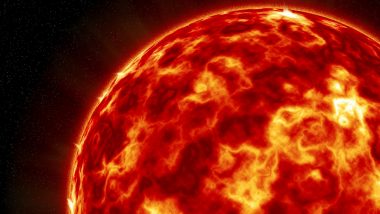Washington, August 3: Scientists at NASA have successfully launched a sophisticated X-ray solar imager on a suborbital flight via sounding rocket to gather new insight regarding how and why the Sun's corona grows so much hotter than the actual surface of Earths parent star.
Developers at NASA's Marshall Space Flight Center in Huntsville, Alabama, call the mission "MaGIXS" -- Marshall Grazing Incidence X-ray Spectrometer. It launched from White Sands Missile Range in New Mexico at 2.20 p.m. (local time) on July 30. NASA-ESA Sun-Watching Spacecraft SoloHI Captures First Solar Eruption.
The MaGIXS mission dispatched its payload, which included a high-powered camera, telescope, and X-ray spectrometer containing a matched pair of grazing incidence parabolic mirrors, to study so-called "soft" X-rays at a wavelength that hasn't been previously observed in such detail.
"Our knowledge of the corona's heating mechanisms is limited, partly because we've not yet been able to make detailed observations and measurements of the temperature distribution of the solar plasma in the region," said Marshall heliophysicist Amy Winebarger, principal investigator for the MaGIXS mission, in a statement.
The Sun's surface temperature is more than 10,000 degrees Fahrenheit, but the corona routinely measures more than 1.8 million degrees Fahrenheit.
MaGIXS will be the first imager to measure specific temperature distributions at different parts of an active solar region. That precision data will help scientists resolve the debate concerning how, and how often, the corona is superheated.
Shedding new light on coronal heating mechanisms could help researchers better understand and even predict potential solar flares and coronal mass ejections, both of which occur most often in connection with regional spikes in coronal heating.
These violent outbursts can interfere with communications satellites and electronic systems, even causing physical drag on satellites as Earth's atmosphere expands to absorb the added solar energy.
The MaGIXS sounding rocket mission also serves as a testbed for instrumentation for future NASA missions to study solar flares in greater detail, possibly tying their origins to measurable coronal activity and helping demonstrate how advanced flight hardware and space systems can be hardened to weather high-energy tantrums from Earth's star.
NASA routinely uses sounding rockets for such brief, focused science missions. They're often smaller, more affordable, and faster to design and build than large-scale satellite missions, Winebarger said.
"They offer unique, suborbital science opportunities, a chance to develop innovative new instrumentation, and rapid return on investment," she added.
(The above story first appeared on LatestLY on Aug 03, 2021 05:55 PM IST. For more news and updates on politics, world, sports, entertainment and lifestyle, log on to our website latestly.com).













 Quickly
Quickly


